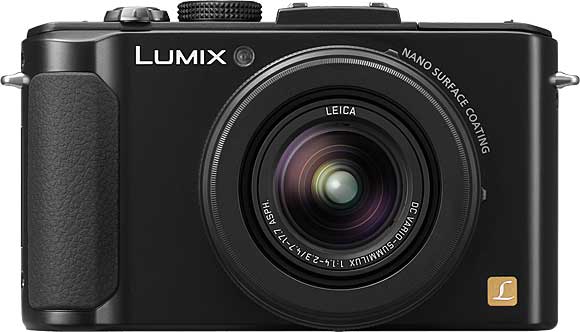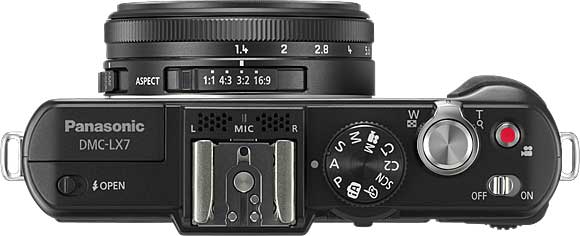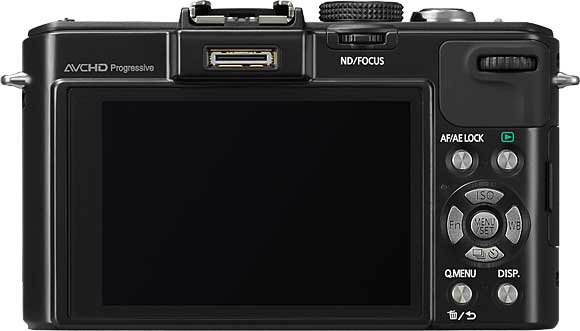Review Date: November 23, 2012
Category: Serious Amateur


Photoxels Gold Award – Premium Compact Camera
HANDLING & FEEL
The Panasonic Lumix DMC-LX7 is a medium compact and light premium compact camera, with a small molded handgrip. The body feels solid and well constructed, with a professional look. It is available in black or white.
Viewing the camera from the front, the AF Assist Lamp (and Self-timer indicator) is at top left of the lens. The lens cap comes with a retaining string and you will have to remove the cap before turning on the camera. The only other thing you may see from the front is the built-in flash when it is popped up.

Viewing the top of the camera from the back, we see the dedicated Movie button, Power ON/OFF switch, the Shutter Release button with the Zoom lever around it, and the Mode Dial. In front of the hot shoe, there is the stereo microphone. On the left side of the hot shoe, there is the built-in Flash and Flash open switch.
It takes about 3 sec. to zoom from wide-angle to tele and I counted approx. 17 intermediate zoom steps. It’s all very smooth and you can even zoom (silently!) during video recording (though at about half the speed). You can also select PASM or High Speed Video when recording a movie (Mode Dial to Creative Video Mode). High Speed Video records at 1280×720 pixels (aspect ratio 16:9), 120fps in MP4 and without audio.
The hot shoe accepts external flash units. Panasonic recommends its own DMW-FL220, DMW-FL360 and DMW-FL500. You can also slip an optical viewfinder or a Live View Finder (EVF) into the hot shoe.
Around the lens barrel are three controls: Aperture Ring, Focus Selector Switch and Aspect Ratio Selector Switch. The Aperture Ring clicks positively from a bright F1.4 to F8 at 1/3 intervals. The LX7 accepts an external filter (37mm diameter) with the addition of the optional filter adaptor DMW-FA1. The lens is image stabilized to help reduce camera shake.

The back of the Panasonic LX7 is dominated by the extra large 3.0-inch LCD screen with a high resolution 920k-dot for a bright and clear display. The LCD is not touch screen. The LCD gains up very well in low light with a clear and smooth display.
On top of the LCD is the Dedicated Connector that accepts a Live View Finder (EVF). Just under the Mode Dial is the ND/Focus Lever. The other controls are on the right side of the LCD: Rear Dial, AF/AE Lock, Playback, Cursor Buttons with MENU/SET in the middle, Q.MENU/Erase button, DISP button. The Cursor Buttons have UP = ISO, RIGHT = WB with adjustment, DOWN = Drive / Auto Bracket / Self-timer, and LEFT = Fn.
The ND/Focus Lever serves 2 functions. Click it to toggle between using and not using the ND Filter (3 stops). In Manual Focus mode, rock it left and right (and then you can opt to use the direction arrow buttons) to focus manually. The screen display can be enlarged 5x, 10x or 4x (click the ND/Focus Lever when screen display is enlarged).
The Q.MENU button brings up the Quick Menu. The Fn can be customized as to what function is set when you press the button. In Playback mode, this button works as the Erase button, allowing you to delete one, a selection or all images. When in MENU, this button also serves as the Back/Cancel button.
Customize the Fn button: [MENU – CUSTOM – Fn BUTTON SET – select from Photo Style, Image Quality, Metering Mode, AF Mode, Focus Area Set, 1 Shot AF, i.Dynamic, Level Gauge, Guide Line, Video Rec Area, Remaining Disp., Flash, Flash Adjust., Aspect Bracket]
The battery and card go into the bottom of the camera and the battery has a latch to keep it from accidentally falling. You may be able to change battery or memory card when the camera is on a tripod. The tripod socket is metal and not inline with the lens.
The Panasonic Lumix DMC-LX7 is fast, responsive, and easy to use and handle. Advanced photographers will find much to like with PASM modes, Aperture Ring, ND Filter and intuitive controls.
Next: Panasonic LX7 User’s Experience


















